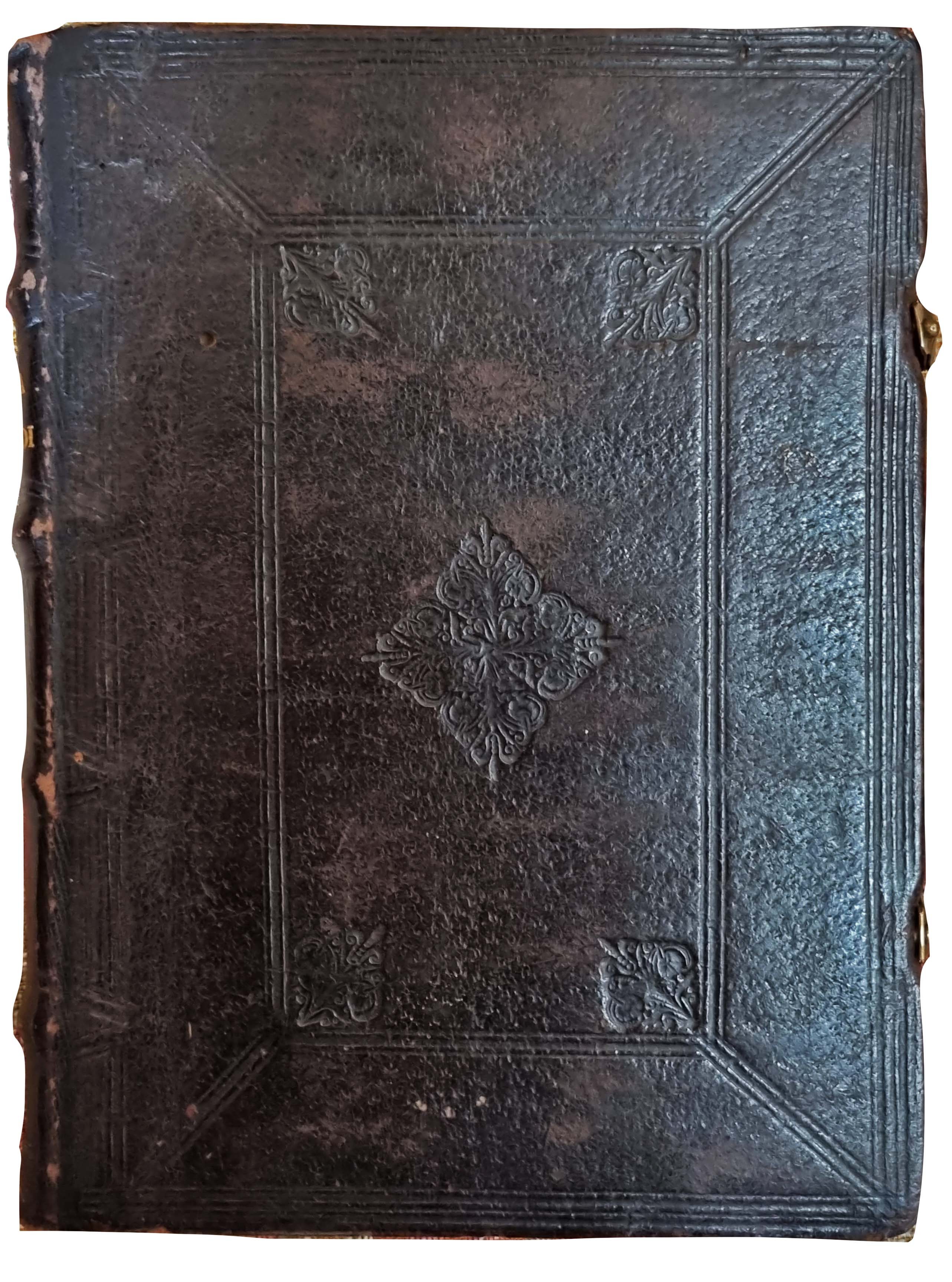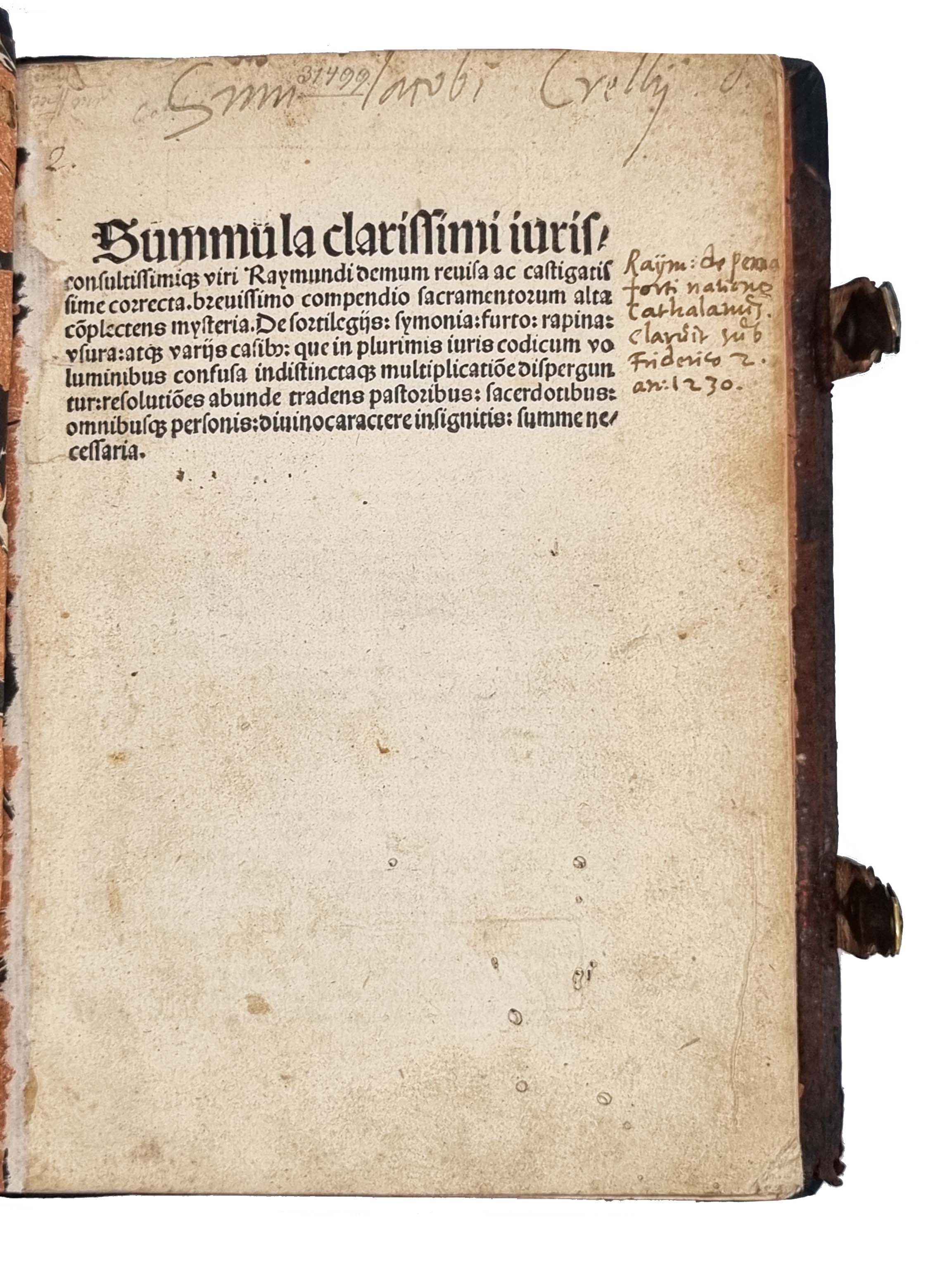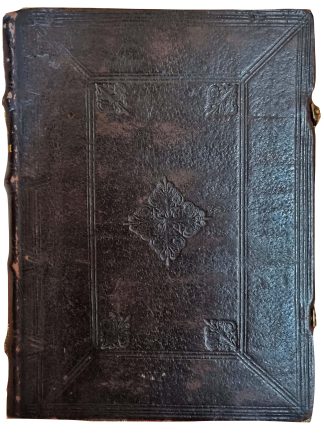PENNAFORTE, Raymundus de.
SCARCE CANON LAW
Summula.
Strasbourg, J. Knobloch, 3 July 1504.£2,750.00
Small 4to. ff. [1], CXLV, [8]. Gothic letter. Title and last 2 ll. a little soiled at margins, small worm holes and trail at foot of text of first 4 gathering, affecting few letters, small worm hole to lower outer blank corner to first half, the odd ink smudge. A very good copy in contemporary black pigskin over bevelled wooden boards, two brass clasps, C19 reback to match, quadruple and double blind ruled, blind-stamped fleurons to corners, four, identical, forming centrepieces in blind to covers, a.e.r., small worm hole to upper board, minor repair to corners, C16 ms ‘Sum Jacobi Crellij’ and early C16 ms note to title, further ms marginalia in the same hand throughout, a few just trimmed but readable.
A very good copy, in an unusual black pigskin binding probably produced in Strasbourg, of this scarce early edition of this most famous compendium of canon law for priests and confessors. The Catalan Dominican Raymund de Pennaforte (or Penyafort, c.1175-1275), professor at Bologna, later canonized, compiled the Decretals of Gregory IX, the most influential canon law collection of all time, used until 1917. ‘Summula’ is an abridgement in verse, attributed to the Cistercian Adam of Aldersbach (or Adam Scotus), of his ‘Summa de casibus poenitentiae’, a manual for Dominican priests and confessors. First published in 1486-90, this metrical version, for easy memorisation and with its own prose commentary, provided the key principles of canon law necessary to deal with the most common sins and legal conundrums. The prologue provides a general introduction on the sacraments. The work proceeds to discuss all 7, beginning with the Eucharist, interspersing theoretical sections (e.g., why the priest says ‘may be Lord be with you’, the preparation of the altar) and specific cases, e.g., when a schismatic or ‘degraded’ priest, or one who practises concubinage, can celebrate the mass; when the blood of Christ freezes or the host breaks or crumbles during the Eucharist; when a sick person receiving the Eucharist is no longer mentally sound; when one vomits the host, etc. A section is also devoted to the correct demeanour expected of priests, e.g., they should not gamble, deal in secular business, or marry. It sheds fascinating light into the everyday life of medieval priests and the sundry, at times surreal, questions they might encounter: e.g., what to do about a hidden treasure; whether usury or theft may be licit; what to do if a ‘rustic’ penitent thinks his confessor has been excommunicated; can women make a last will; how to deal with soothsayers; whether public penitence be required for secret adultery, etc. The section on penitence and absolution provided a source for Chaucer’s ‘Parson’s Tale’. The early C16 annotator, Jacob Crell, noted specific topics discussed at the top of several leaves, for easier consultation, and highlighted or glossed sections on the baptism of babies not yet born, concubinage and bigamy.
Only Northwestern copy recorded in the US. USTC 695016; VD16 R 169; Adams R216.In stock





